photography nature of work,photography nature wallpaper,photography nature competition.night photography nature,night photography stars,photography nature black and white
S,5
Thursday, May 30, 2013
Tali Wiru - a new taste of the outback
 David Warne joins a small group for an intimate outback dining experience in Australia's Red Centre.
David Warne joins a small group for an intimate outback dining experience in Australia's Red Centre.
The Voyages group, operators of the popular Ayers Rock Resort, has been quietly upgrading and expanding the range of experiences available in one of the most iconic locations in Australia's Northern Territory. One of the newest and most lavish experiences on offer is ‘Tali Wiru'.
Essentially an intimate, premium version of the popular ‘Sounds of Silence' dinner, traditionally one of the ‘must do' experiences on any trip to the Northern Territory's Red Centre, Tali Wiru brings a level of sophistication previously unseen to outback dining under the stars.
In the local Anangu language Tali Wiru means ‘beautiful dune', which perfectly describes the magnificent setting overlooking Uluru in one direction and Kata Tjuta (the Olgas) in the other.
Our aboriginal guide for the evening - the delightful Eddie Bird - collects us from the resort for the short drive to the dune itself, sharing tantalising snippets of information about our evening ahead.
As we walk up the side of the dune Uluru is revealed, almost black against the early evening sky.

Near the top of the dune we are greeted by the percussive, rhythmic hum of a didgeridoo and glasses of perfectly chilled Louis Roederer champagne, a blend of traditional and contemporary that sets the tone for the evening.
Over the next hour or so, the Tali Wiru team deliver trays of delicious canapés - and frequent top-ups of bubbly - while we savour the setting sun turning Uluru a deep red.
As Uluru loses its colour, we are taken to the highest point of the dune where dining tables offer 360-degree views. The timing is perfectly coordinated with the sun's final disappearance over the horizon, leaving a spectacular colour-wash it its wake.
The remaining colour soon gives way to a million twinkling stars and attention turns to the four-course dinner.
The menu offers a small but imaginative selection of dishes, many of which are subtly flavoured with indigenous ‘bush tucker' ingredients. Each individual dish is paired with its own premium Australian wine.

An ‘amuse bouche' of smoked duck leg roulade with quandong, served with a Katnook Estate Cabernet Sauvignon gets my selections under way, followed by an entrée of succulent butter poached prawns accompanied by a glass of Shaw and Smith Sauvignon Blanc.
An extraordinary Darling Downs Wagyu Fillet grilled with native thyme and garlic and served with smoked olive and kutjera tapenade was the star of the show, accompanied by a rich and moreish Penfolds 389 Cabernet Sauvignon Shiraz.
Although tempted by the dark chocolate and chilli mouse, I decide to finish with a plate of fine Australian cheeses, accompanied by a glass of All Saints Estate Marsanne.
Hot dishes arrive under silver dome plate covers, and while certainly practical on a cool evening it feels rather decadent. The pace of delivery of each course can't be faulted, with plenty of time to savour each dish and enjoy a good conversation in between courses.

Quite how the Tali Wiru team manage to produce cuisine of such a high standard in the dark from what is essentially a corrugated iron shed is something of a mystery.
After dinner we are invited to benches placed around the fire and offered a selection of fine ports and cognacs, with native wattleseed infused hot chocolate.
Eddie takes centre stage to lead us through a fascinating tour of the night sky. Starting with the more familiar European perspective, Eddie progressively reveals some of the many and diverse stories of the constellations from the indigenous perspective, both from the local Anangu people and other aboriginal groups. These stories have both an emotional and practical application to the indigenous people, as through them is developed the understanding of the harsh environment upon which their very survival depends.
Eddie invites questions about aboriginal history and culture, during which many of us become fully engaged in the discussion.

But all too soon a magical evening comes to an end and we leave with full stomachs and full minds. Spirited conversation continues on the drive back to the resort, fuelled by a heady mix of fine wines and new experiences.
So much for a bush tucker trial - the Outback has never tasted so good.
Tali Wiru operates from April to October each year and costs AUD295 per person, fully inclusive and includes return transfers from Ayers Rock resort or Latitude 131.
A voyage to the Red Centre
 Alex Brosslers shares the details of his recent voyage to Australia's Red Centre.
Alex Brosslers shares the details of his recent voyage to Australia's Red Centre.
Day 1
This morning I was up early to catch the direct flight to Alice Springs. There is only one direct Qantas flight a day which departs at around 9am, so you have to be at the domestic airport at about 8am.
The flight from Sydney to Alice Spring takes just over 3 hours. I arrived early afternoon and I had a shared transfer arranged to take me to my hotel. It takes around 20-30 minutes depending on which hotel you stay at and how many drop off there are before yours. I was staying at the Chifley Hotel, which is a 5-10 minute walk from the main street.
Chifley Hotel
The 3.5-star hotel has large rooms, is clean and comfortable, but a little dated. For the time that you spend in your hotel in Alice Springs though, it's quite enough.
The 3.5-star hotel has large rooms, is clean and comfortable, but a little dated. For the time that you spend in your hotel in Alice Springs though, it's quite enough.
I would say that the location of the property isn't the best, especially as Aurora Hotel is a little more up-to-date and a two-minute walk from the main street.
I had the afternoon free so I took the time to have a walk around the town centre. This didn't take long but I did find the main street, which was very interesting with lots of shops with local artists works and places to buy a head net, which you will need later on in the trip.
I had the afternoon free so I took the time to have a walk around the town centre. This didn't take long but I did find the main street, which was very interesting with lots of shops with local artists works and places to buy a head net, which you will need later on in the trip.

Day 2
Today I joined the West MacDonnell Ranges & town full day tour with AAT Kings. I was picked up at 7am from the hotel to start the trip. There were only seven people on the tour from a maximum of 10.
We first headed to Simpsons Gap but on the way we have a quick stop at John Flynn's Memorial. John Flynn is the founder of the Royal Flying Doctors.
We then headed on to Simpsons Gap, which took about 20 minutes. Our guide Jill explained the history of the area and also told us the names of the surrounding mountains and how they were named.
We arrive at the car park of Simpsons Gap. The air was still fresh, but the sun had come up and the temperature was warming up quickly. Simpsons Gap is a stunning gorge carved out of the West MacDonnell Ranges by Roe Creek, where water flows through a small gap in the range.
We made the five-minute walk down to the gap with Jill who pointed out some black-footed Wallabies, which were coming out for the morning sun. Jill made her way back to the bus to arrange our morning tea break. We had the chance to have a look around the area and noticed there was some water still at the basin of the gap from some rain in the previous month.
After a wander around we head back to the bus for morning tea in the rising sun. We jumped back on the bus and headed to Standley Chasm, which is another 20 minutes drive from Simpsons Gap. Standley Chasm is named after the first teacher in Alice Springs. You walk into the chasm along a stony watercourse lined with many different native trees, which are fed by a constant trickle of water that runs down from Standley Chasm.
We make our way back down to the gift shop café for lunch, which consisted of sandwiches and crisps. I then head back to Alice Springs where I am dropped off to have a walk around before my afternoon town tour.
I was picked up by another AAT King bus for the afternoon town tour. We first visited the ‘School of the Air' - known as the largest classroom in the World. Alice Springs School of the Air was established in 1951 to provide an educational resource to primary school students living in remote central Australia. Students study at home with a home tutor and join with a teacher for a regular live class lessons broadcast via satellite from the studio in Alice Springs.
We watched a short video about the history of the school and how it was started, what technology was used in the beginning, right up to the technologies used today. After the video we watched a live lesson from the viewing room. The visit to the School of the Air was a great way to see where the children lived and how they were all brought together in one classroom.
After class we moved onto Alice Springs first settlement, the original telegraph station. Did you know that Alice Springs was actually called Stewart up until 1932? The original buildings have been rebuilt and are more of a museum showing how they used to live back in the day.
We next went to the HQ of the Royal Flying Doctors. We watched an interesting short film of the history of the flying doctors, finding out how Rev John Flynn had set up the airline company that has saved so many live since 1928. They now have 21 bases with 61 planes and over 270,000 patients.
Next we visited Alice Springs Reptile centre. Now if you are like me and are not the biggest fan of snakes this might not be the place for you. I still went in as there are lots of very cool lizards and I just stayed away from the snake cabinets, they had some really big pythons on display.
Frank, the owner of the centre, was a fountain of knowledge telling us the differences between all the different snakes and lizards, as well as what to do if are bitten by a snake and what to wear when in areas with snakes in - all very good advice. There is an amazing surprise at the end of the tour but I wont ruin that for you.
We ended the tour on the top of Anzac Hill with a beautiful sun set over Alice Springs. Drop offs then begin and you can be dropped in town or at your hotel.
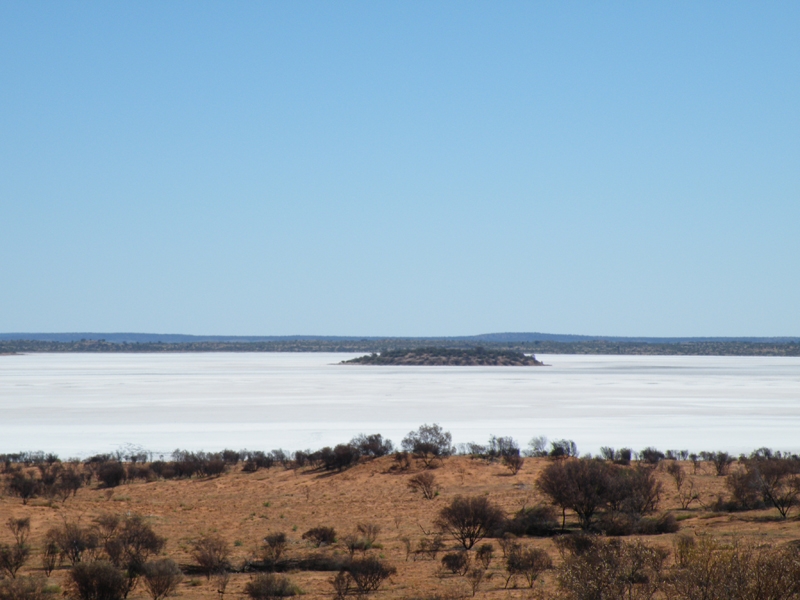
Day 3
AAT Kings call and confirmed my pick up time the night before, so I was ready for the pick up after breakfast at the hotel.
We set off down the Stewart Highway and head towards Ayers Rock. The total journey is 455km and it takes about six hours in total. They do stop every one and a half hours, which really does break up the trip so you don't think you have been on the road all day.
We drive the first leg through the MacDonnell and James Ranges, viewing the rugged scenery of the Outback along the way. We visit a camel farm, where there is the time for a short camel ride and later stop at the Mt Ebenezer roadhouse for the morning tea and the opportunity to purchase locally made Aboriginal art.
There's time for a quick pause at the majestic Atila (Mt Conner) before arriving at Ayers Rock. The tour concluded at around 1pm at which time the hotel drop offs commence.
There's time for a quick pause at the majestic Atila (Mt Conner) before arriving at Ayers Rock. The tour concluded at around 1pm at which time the hotel drop offs commence.
Sails in the Desert Hotel
This is a great hotel, which has just had a refurbishment in the past year and looks great. The whole hotel feels really open and it has a big outdoor pool with loads of space so you can relax. The rooms are styled with an Aboriginal theme, light colours, large comfortable bed and a spacious en-suite bathroom. Each room also has a balcony, which has partial views over the rock.
This is a great hotel, which has just had a refurbishment in the past year and looks great. The whole hotel feels really open and it has a big outdoor pool with loads of space so you can relax. The rooms are styled with an Aboriginal theme, light colours, large comfortable bed and a spacious en-suite bathroom. Each room also has a balcony, which has partial views over the rock.
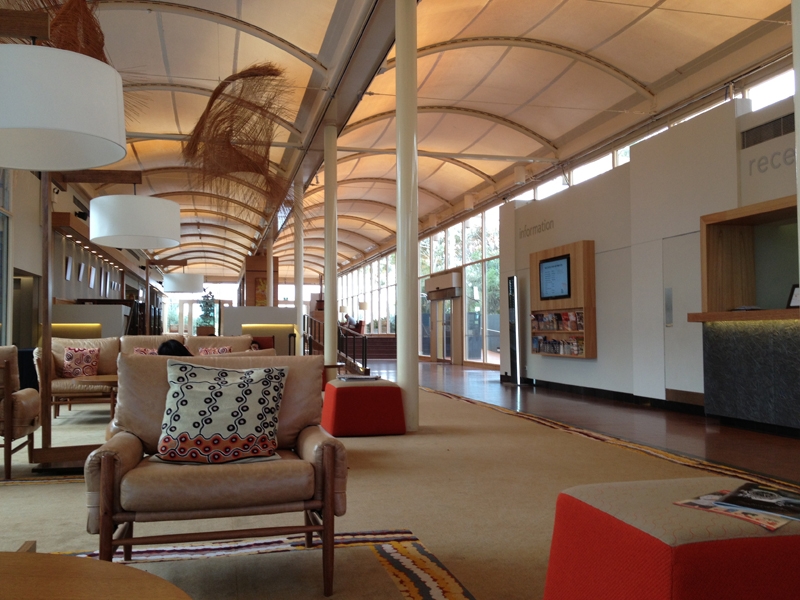
Day 4
Our tour guide, Jess from SEIT Tours, picked me up at 2pm from my hotel lobby for an Uluru Sunset Half Day tour. We head out to the national park and on the way there Jess gives us the background of the area from when westerners took over the land to when it was finally given back to in 1985.
The first stop on the trip was the iconic viewing area where all the postcards of the rock are taken from. We had some time to take some pictures before moving on to the base of the rock.
We park the bus at the bottom of the path that goes up the rock. You can walk up the rock, but the guides prefer you don't, as it is sacred to the Aboriginals. I would have really liked to walk up, but in respect to the tour guide I opted out, as did the others in the group. I think if you want to walk up the rock you should keep some spare time and make you own way down and do the walk then. There are transfers from the resort to the rock leaving throughout the day.
We take a walk around the base of the rock and we are told stories about different features of the rock. The walk is not strenuous at all so it is suitable for all health ranges. I get really up close to the rock even inside it in some areas. There is lots of Aboriginal art to be seen throughout the tour and our guide Jess explains what some of it means.
We make it back to the van and drive round to another side of the rock. We jump out and head for another easy walk along the base of the rock. We see more of the rock's features and more artwork.
We then moved on to a viewing point for sunset, which was amazing. We were served sparkling wine and given some nibbles before the show began.
After the show had finished we were taken back to the resort and dropped at our hotel were we were left to enjoy dinner in one of the restaurants. I chose to eat at the Pioneer.

Day 5
I rose early this morning for the SEIT Kata Tjuta Sunrise half-day tour, which included breakfast. We traveled out to the national park to the entrance of Uluru-Kata Tjuta National Park. We made the 40-km journey through the desert landscape to the mighty rock formation. On arrival at the viewing area we walk to the best vantage point to see the 36 domes that comprise this spiritual place while watching the sun's morning glow as the desert comes alive.
After the sun had risen we head to the western side of kata Tjuta where there is the opportunity to relax and enjoy breakfast. This was made up of cereal and coffee, toast and jam. After breakfast we approach the entrance to Walpa Gorge, named after the wind that blows through the two domes.
We walk through the Gorge to the end, which was a relief with the wind. Since getting to Ayers Rock, mostly outside of the resort, the flies are relentless. The seven-dollar head net I had bought was a godsend and I could relax and enjoy the walk without them bothering me as much.
We return to the resort around 11.15am.

Longitude 131
From my visit to Longitude I found it to be a totally different experience. When you arrive at the airport, a private transfer takes you straight to the main tent of the resort. You are checked in and taken through your itinerary for the next two or three days. After that you are taken to one of the 15 luxury tents.
From my visit to Longitude I found it to be a totally different experience. When you arrive at the airport, a private transfer takes you straight to the main tent of the resort. You are checked in and taken through your itinerary for the next two or three days. After that you are taken to one of the 15 luxury tents.
The main tent is made up of the dinning room and a library, which is stocked with literature about the Uluru.
Each of the separate tents has an undisturbed view of the rock, and large space with a King size bed and an open plan bathroom situated behind the partition wall behind the bed.
The rooms are very relaxing and use of natural colours, which reflect those outside. If you are looking for a secluded experience, beautiful views and a high standard of service, then pick the Longitude.
Sound of Silence
In the evening I was picked up for the award-winning Sound of Silence meal and taken a short distance to a sand dune where we mingle and enjoy a glass or two of bubbles. After watching the sun go down we are led through to the dining area. The tables are set as they would be for any function, but in this case you are surrounded by sand dunes and the open sky. We are sat down and welcomed with some traditional Aboriginal dance. We enjoy the food and drink while we see the stars reveal themselves in the night sky. The resident star talker then gives us a guided tour of the night sky. We then locate the Southern Cross, the signs of the zodiac, the Milky Way, as well as planets and galaxies that are visible due to the exceptional clarity of the atmosphere.
In the evening I was picked up for the award-winning Sound of Silence meal and taken a short distance to a sand dune where we mingle and enjoy a glass or two of bubbles. After watching the sun go down we are led through to the dining area. The tables are set as they would be for any function, but in this case you are surrounded by sand dunes and the open sky. We are sat down and welcomed with some traditional Aboriginal dance. We enjoy the food and drink while we see the stars reveal themselves in the night sky. The resident star talker then gives us a guided tour of the night sky. We then locate the Southern Cross, the signs of the zodiac, the Milky Way, as well as planets and galaxies that are visible due to the exceptional clarity of the atmosphere.
Day 6
I take the afternoon flight from Ayers Rock back to Sydney.
How to see Everest
 If all the imagery and talk surrounding the 60th anniversary of the first ascent of Mount Everest has got you thinking about how you'd like to see the tallest mountain on earth, we round up the options open to you.
If all the imagery and talk surrounding the 60th anniversary of the first ascent of Mount Everest has got you thinking about how you'd like to see the tallest mountain on earth, we round up the options open to you.
Everest, once seen as the toughest challenge in mountaineering, is acquiring a reputation as a much easier ascent; people of suitable fitness and experience are able to make it to the top in the company of expert guides and sherpas, whilst mooted plans to add a ladder to the infamous Hilary Step, the last obstacle on the way to the summit, are designed to ease congestion and speed up the ascent and descent of the mountain.
However, if you want to experience the atmosphere of a big mountain without paying £40,000 for the pleasure of climbing to the top, you can follow in the footsteps of the New Zealand beekeeper and local Sherpa who came to the world's attention on 29 May 1953 in a variety of ways.

With reagrds to the weather, the weeks at the end of May remain the best times to attempt the approach. Alternatively, the trails are quieter in December or February, but temperatures are also much lower
Since Nepal's civil war ended in 2006, the number of people travelling to the Everest region has rocketed to 35,000 a year - at the height of the season some 60 flights a day land at Lukla airport. The gateway town of Namche Bazaar is then used for gathering groups together and acclimatisation, so has a good network of facilities and places to stay before people make their way to Everest Base Camp.
From here there are a wide variety of treks that can be done. A classic 17-day trek to Everest Base Camp costs £2,999, with accommodation in a mixture of camping and lodges. the route takes in Namche Bazaar and the incredible monastery at Thyangboche, set against a wall of muscular mountains and snowcapped peaks, before arriving at the base; for an alternative, breathtaking view of the peak there's also the chance to climb nearby Kala Pattar (5545m).
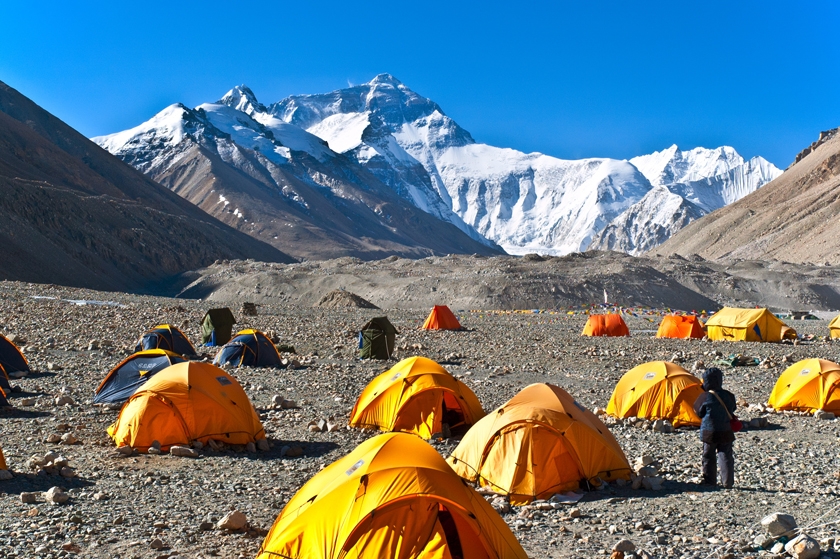
To beat the crowds though, the advice is to tackle the original trek taken by the 1953 British expedition and approach from the town of Jiri rather than Lukla. You'll get a better appreciation of local life and the trails are emptier.
Of course, if you don't want to trek to Base Camp but do want to see Everest, it's possible to engineer a detour to the mountain in a variety of other itineraries. Our Great Himalaya and Kathmandu tour for instance includes a flight of a lifetime around Mount Everest, along with the chance to explore this fascinating region, its heritage and wildlife.
Alternatively, in Tibet take a tailor-made 11-day tour that introduces you to the spiritual city of Lhasa, the wilderness and landscape around Shingatse, Tibet's second city and an important spiritual centre, then drive to Xegar and Rongbuk, home of the highest monastery in the world, before visiting Everest Base Camp and ogling the mountain that looms above it.

Then there are the other 8,000m mountains in the region clamouring for your attention that can be visited on trips including the Annapurna Circuit or the Manaslu Circuit. There's something about Everest though and the boast of being the tallest still means something. Regardless of how many times you've seen the mountain or been bombarded with images of ice and glaciers, the reality of the tallest mountain on earth will leave you breathless, and not just because of the altitude.
Photography Nature post 3
Super-Jeep Expedition, Iceland

 Iceland is home to some of Scandinavia's most impressive wilderness scenery. Discovering its many geological wonders in the winter months makes for an exciting and memorable experience, provided you have the right transport.
Iceland is home to some of Scandinavia's most impressive wilderness scenery. Discovering its many geological wonders in the winter months makes for an exciting and memorable experience, provided you have the right transport.
This four-day short break, starting and ending in Iceland's capital Reykjavik, includes two days exploring some of the country's natural splendours by super jeep. Going where other vehicles can't, you'll cross rivers, glaciers, black-sand beaches, snow fields and mountains in search of Iceland's most spectacular sights including Geysir, Gullfoss Waterfall and the dramatic landscapes of Thorsmork Valley and the Thingvellir National Park
Northern lights dazzle Northern Hemisphere
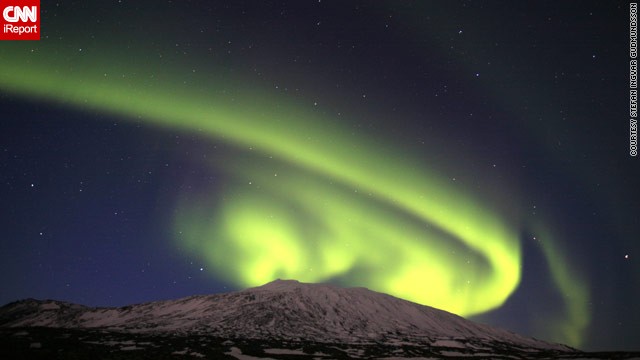 They are one of nature's most spectacular sites: The aurora borealis, or northern lights as they are known, have captivated onlookers for thousands of years.
They are one of nature's most spectacular sites: The aurora borealis, or northern lights as they are known, have captivated onlookers for thousands of years.This past weekend saw a particularly stunning display following a phenomenon known as a coronal mass ejection, where the sun spews a burst of particles into space that reach Earth one to three days later.
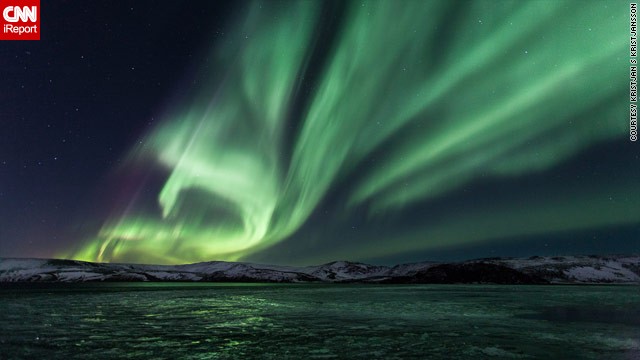 Bursts toward earth can cause electromagnetic storms when they react with the Earth's magnetic field, resulting in an explosion of color in the sky.
Bursts toward earth can cause electromagnetic storms when they react with the Earth's magnetic field, resulting in an explosion of color in the sky."We see them regularly, but they were quite spectacular [Sunday] night ," said Halldor Sigurdsson from Iceland, who captured some of the display. "A busload of tourists came and they certainly got their money's worth."
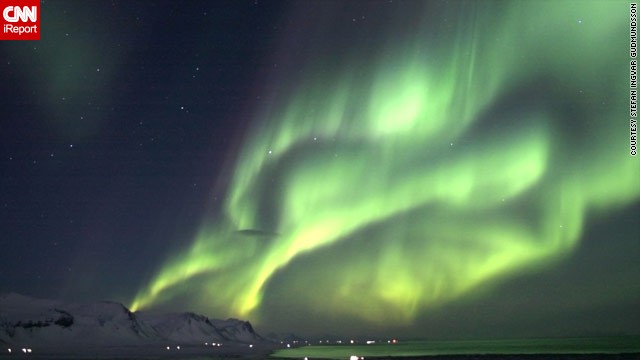 Meanwhile in the tiny Icelandic fishing village of Ólafsvík, photographer, tour guide and occasional fisherman Stefán Ingvar Guðmundsson spent three hours driving around the beautiful Snæfellsjökull glacier near his home to take photos.
Meanwhile in the tiny Icelandic fishing village of Ólafsvík, photographer, tour guide and occasional fisherman Stefán Ingvar Guðmundsson spent three hours driving around the beautiful Snæfellsjökull glacier near his home to take photos.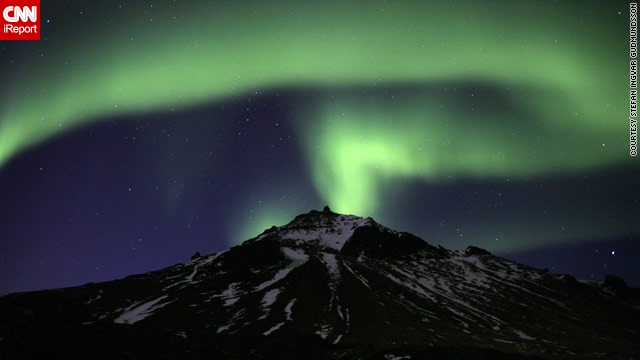 "It's always a big 'wow,' but last night was overwhelming," he said Monday.
"It's always a big 'wow,' but last night was overwhelming," he said Monday.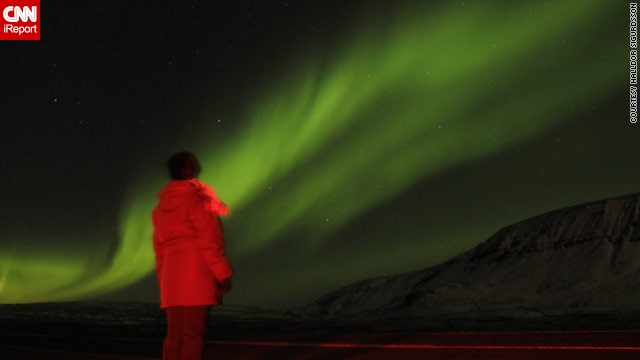 The northern lights have been particularly spectacular in 2013 as the sun is expected to reach the peak of its 11-year solar cycle later this year.
The northern lights have been particularly spectacular in 2013 as the sun is expected to reach the peak of its 11-year solar cycle later this year. 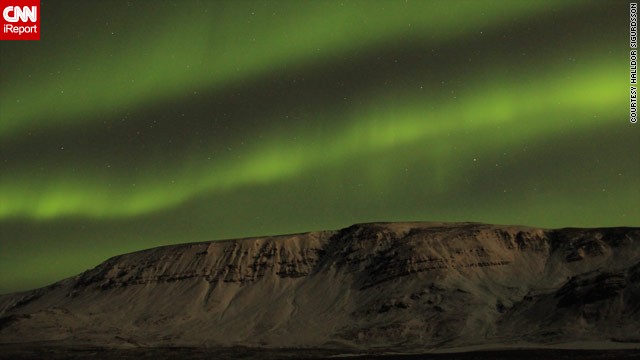
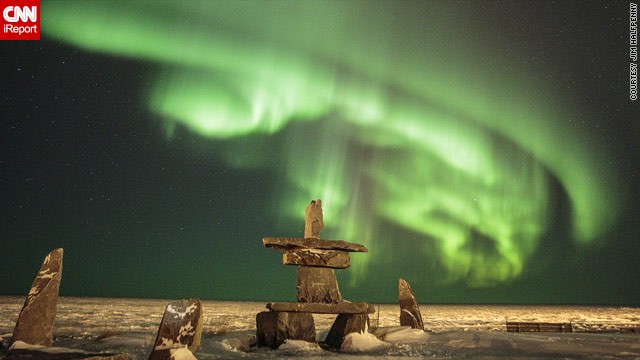
Photos: King Island, Walrus and the Bering Sea
 Rising out of the Bering Sea like a monolithic swoosh, is King Island. The 2-1/2-mile-long refuge is nestled between nothing but wilderness -- surrounded by ice in the winter months and ocean for dozens of miles come summer.
Rising out of the Bering Sea like a monolithic swoosh, is King Island. The 2-1/2-mile-long refuge is nestled between nothing but wilderness -- surrounded by ice in the winter months and ocean for dozens of miles come summer.But while there might be nothing for miles, there's still plenty on the island itself.

 Nestled on the southside of the island is Ukivok, the Inupiat village that has remained uninhabited since the 1970s. In the face of social and economic pressures, its people, the King Islanders, have moved away -- with many resettling some 90 miles away on the Alaska mainland in Nome. Known for their walrus hunting and ivory carving abilities, some still return to King Island during the summer.
Nestled on the southside of the island is Ukivok, the Inupiat village that has remained uninhabited since the 1970s. In the face of social and economic pressures, its people, the King Islanders, have moved away -- with many resettling some 90 miles away on the Alaska mainland in Nome. Known for their walrus hunting and ivory carving abilities, some still return to King Island during the summer.Though the people are gone, buildings remain -- still perilously perched on driftwood stilts on the side of the island's steep cliffs. Wave-battered and windswept, some have collapsed. Others teeter perilously.

 Above the village sits the island's jagged peaks, which look like something out of sci-fi movie -- impossibly high and sharp. Snow covered, they look more like giant ice crystals than rocks. Father Bellamine Lafortune, one of the first Catholic priests to serve in the village, described the island's mountains as “huge peaks like steeples of some fairy temples.”
Above the village sits the island's jagged peaks, which look like something out of sci-fi movie -- impossibly high and sharp. Snow covered, they look more like giant ice crystals than rocks. Father Bellamine Lafortune, one of the first Catholic priests to serve in the village, described the island's mountains as “huge peaks like steeples of some fairy temples.”Still there, too, is a statue of Christ the King, a remnant of the village's Catholic roots. It rests on a cliff 700 feet above the village, watching over King Island since 1937. The 900-pound, life-sized bronze statue once had a crown. But sometime in the last decade, the weather-worn crown came apart and fell to the ground, according to a story by Father Louis Renner, who presided over the village's last mass in 1974.


 The statue still stands. Renner wrote in “Pioneer Missionary,” his biography of Lafortune, that the statue served as a pilgrimage point for the 200 or so practicing King Island Catholics. At the base of the statue, he wrote, Lafortune planted every kind of plant and flower that grows on the island.
The statue still stands. Renner wrote in “Pioneer Missionary,” his biography of Lafortune, that the statue served as a pilgrimage point for the 200 or so practicing King Island Catholics. At the base of the statue, he wrote, Lafortune planted every kind of plant and flower that grows on the island.The statue is the last vestige of the church's presence. The church, built in 1929, was torn down by village men in 1985 after it became structurally unsound. The church bell collapsed during Renner's visit in 1974.



Photos: Best northern lights of 2013

 Alaskans this past weekend were treated to some of the best northern lights of this winter, thanks to a cloud of magnetically charged particles that erupted from the sun.
Alaskans this past weekend were treated to some of the best northern lights of this winter, thanks to a cloud of magnetically charged particles that erupted from the sun.
As this Coronal Mass Ejection, as it's called, hit Earth's atmosphere, it created massive geomagnetic storms, which in turn lit up the skies.
These photos were taken Saturday from Eureka Lodge, about 128 miles northeast of Alaska's largest city of Anchorage, between 10 p.m. and 1 a.m.



 Alaskans this past weekend were treated to some of the best northern lights of this winter, thanks to a cloud of magnetically charged particles that erupted from the sun.
Alaskans this past weekend were treated to some of the best northern lights of this winter, thanks to a cloud of magnetically charged particles that erupted from the sun.
As this Coronal Mass Ejection, as it's called, hit Earth's atmosphere, it created massive geomagnetic storms, which in turn lit up the skies.
These photos were taken Saturday from Eureka Lodge, about 128 miles northeast of Alaska's largest city of Anchorage, between 10 p.m. and 1 a.m.



Subscribe to:
Posts (Atom)












